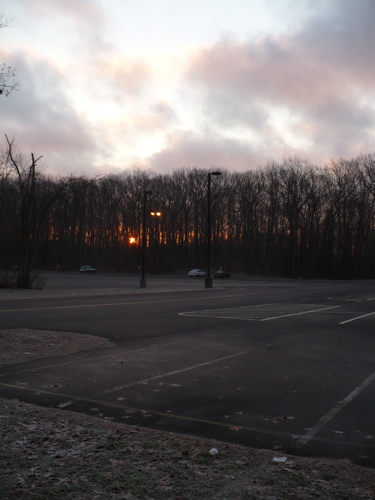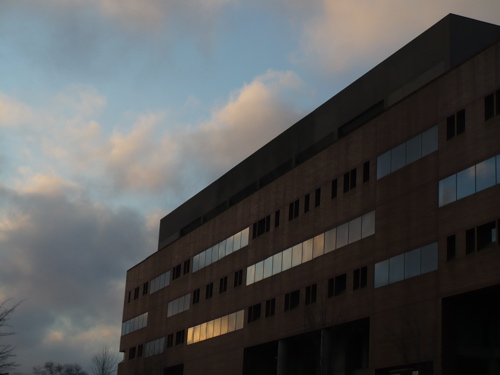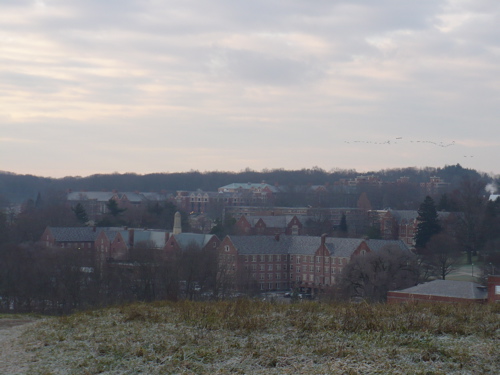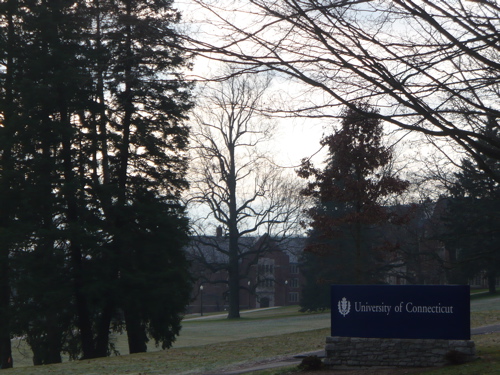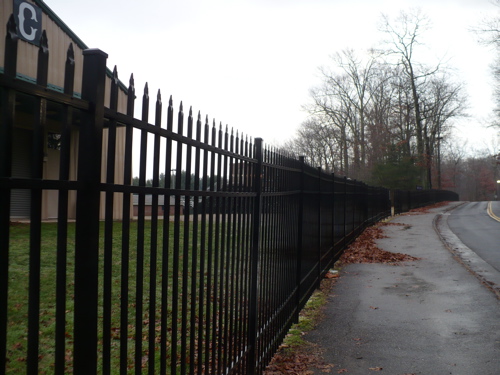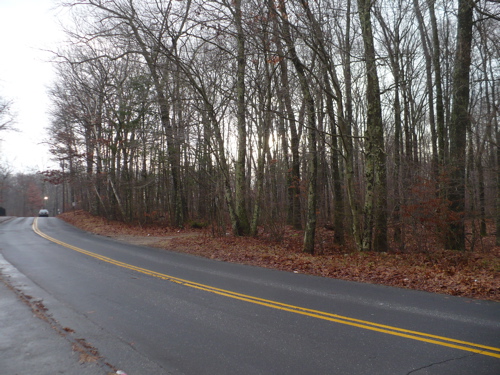Still not very happy with thinking about the edges of campus either as abject or as sublime, as I discussed the other day. Took some photographs to examine more closely, again of UConn, just past dawn, the day before Thanksgiving.
Campus borders are not homogeneous. They can take shape as an iron fence, a fork in a road, a pasture’s edge, an asphalt lot. Sometimes there really is no border at all, just a progression from the campus center to the outskirts to the countryside. Yet the university, or this university at least, thoroughly undoes the usual progression between the city and the wild. All of a sudden, surrounded by trees, practically without outskirts, industrial buildings rise up; apartment towers and and sports stadiums appear in the middle of nowhere; the clutter of fallen leaves is replaced by a grid of brick pathways. The rural university is an anomaly in the landscape, small and insignificant between the hilltops but still sprawling, sucking the local rivers dry and polluting the groundwater.
The spatial and temporal boundaries of campus overlap oddly. That day before Thanksgiving, for example, the center of campus was quite vacant, while the outskirts had a fair number of middle-aged people walking their dogs – or just walking themselves. The center of campus is itself spatially differentiated and bounded in all sorts of ways: organized by landscape architects into walkways and driveways, lawns and fences; carefully labeled and mapped and lit (at night) in orange sodium; vertically stratified, with the library looking down on the computer science building, which in turn looks down on the adjacent business school; in short, aesthetically and functionally differentiated.
Edges within edges, exteriors within interiors within exteriors, illogical leaps between different borders, fences that protect nothing. The landscape of the university’s borders is partly a document of the history of the university – that agriculture school, for instance, is a relic in a state with not much agriculture any more. And all those forests around the university, running out to the horizon in blue, have grown back since the decline of agriculture in Connecticut. Once, according to folk history, almost the whole state was bare of trees. So the forests at the edge of the university’s fields are a symbol of the disappearance of the farms that that university used to serve.
The social borders of the university are nicely symbolized by its physical arrangements. That parking lot? A good sign that most of the student have cars. That most of them come from families that can afford cars. Those little roads, running over the hills and through the fields? They run off into the countryside where most of the faculty live, in their faux colonials with their children. Marking the meager barrier between town and university. It’s radically different to enter campus through a quiet back road than to enter by the state highway, through commercial strips and traffic howls.
The politics of the university are apparent in its borders too: in the fences that keep the unauthorized from entering the playing fields and the horse fields; in the presidential houses at the campus margins that are overpriced and out of place, paid for by taxpayers in the hopes of housing receptions for prospective donors; in the way the university uses its land. There’s a good question for a land-grant university: what is its relationship to the land?
